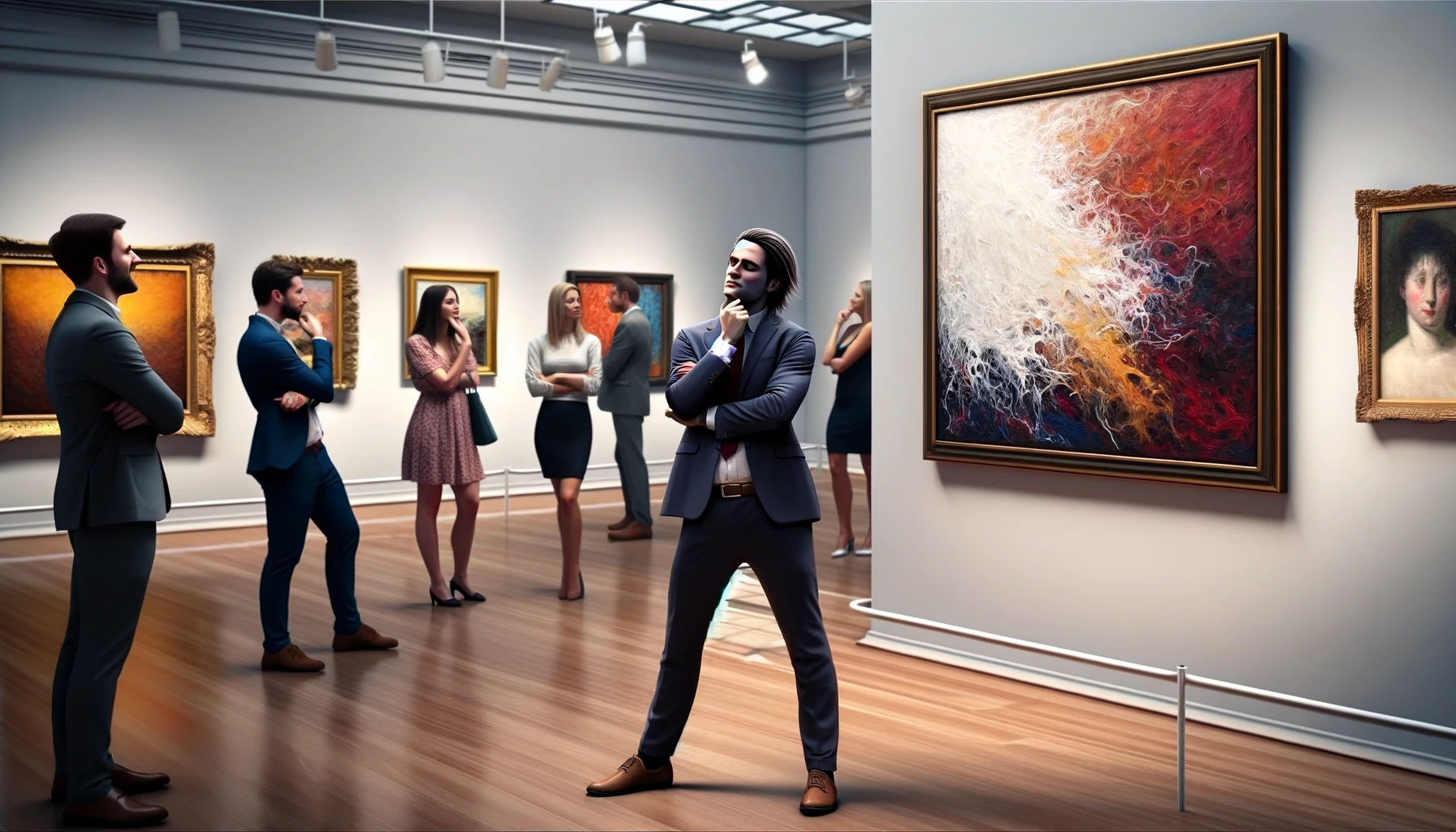Ever found yourself aimlessly wandering through an art gallery, feeling utterly out of your depth? Fear not, for we’ve compiled the ultimate guide to pretending you understand art, ensuring you can walk through galleries with the air of a seasoned critic, even if your idea of high art is the latest superhero blockbuster. With these tips and tricks, you’ll be nodding thoughtfully at abstract paintings and throwing around terms like “juxtaposition” and “neo-expressionism” with the best of them.
1. The Thoughtful Nod:
Mastering the thoughtful nod is crucial. Stand before any piece of art—preferably something abstract—and nod slowly, as if the artist’s intentions are dawning on you. A slight frown suggests depth of thought. Don’t be afraid to occasionally tilt your head, which implies you’re examining the piece from various perspectives.
2. The Pensive Stroke:
Accompany your nod with a pensive stroke of the chin. This universal gesture of deep contemplation says, “I’m considering the socio-political implications of this brush stroke.” It’s a physical expression that indicates a cerebral process, giving you an air of wisdom without saying a word.
3. Vocabulary is Key:
Sprinkle your conversation with art terms. Don’t know what “post-modern” means? It doesn’t matter. Use it often. Other useful terms include “form over function,” “a study in contrast,” and “the embodiment of ennui.” Integrating phrases like “the visual language” and “texture of the narrative” can also enhance your art lexicon.
4. Ambiguous Compliments:
When asked for your opinion, vague is the way to go. Say something like, “The artist really challenges the viewer’s perceptions,” or “It’s a provocative exploration of the medium.” Ambiguity is your friend. This way, you’re open to interpretations without being incorrect.
5. Reference Obscure Artists:
Drop names of artists no one has heard of (bonus points if you invent them). “This piece really reminds me of Armando Pizzicato’s early work in the ’70s.” Watch as others nod in agreement, not wanting to seem uninformed. Mentioning an artist’s “lesser-known phase” adds an extra layer of finesse.
6. Perfect Your Exit:
After you’ve spent a suitable amount of time in contemplation, make your exit from the piece with a final, knowing nod, as if you and the artwork share a secret. Whisper a word like “exquisite” or “transcendent,” ensuring it’s just audible enough for someone nearby to hear and wonder at your depth.
7. Practice Your Sip and Stare:
At openings, always hold a glass of wine (or sparkling water for those who prefer). Sip slowly while staring at a piece. It’s less about the drink and more about the sophisticated aura you project. Occasionally pause midway through your sip, indicating a sudden and profound appreciation of the work.
8. The Art of the Question:
Instead of making statements, ask profound questions. “What is the artist really trying to say?” This not only deflects attention from your lack of knowledge but also puts the onus on others to provide interpretations. Follow up with, “How does this piece speak to you?” to continue the dialogue.
9. Embrace Controversy:
If you find yourself in a discussion, boldly claim that the piece is “controversial.” This implies a deep understanding of the art world’s inner workings and its audience’s varied reactions. Assert that the artwork “pushes boundaries” or “defies convention,” which often garners nods of respect.
10. The Laugh:
Lastly, every so often, look at a piece and chuckle quietly, as if you’re in on the joke. “Ah, classic,” you might say, leaving those around you bewildered and impressed. Mention that the piece “echoes the satirical stance of post-structuralist art,” even if you’re unsure what that means.
Armed with these advanced tips, along with an air of unwavering confidence, you’re ready to tackle any art gallery or museum and convincingly masquerade as a connoisseur. Remember, confidence is key; in the world of art appreciation, it’s not about what you know but how well you pretend to know it.
